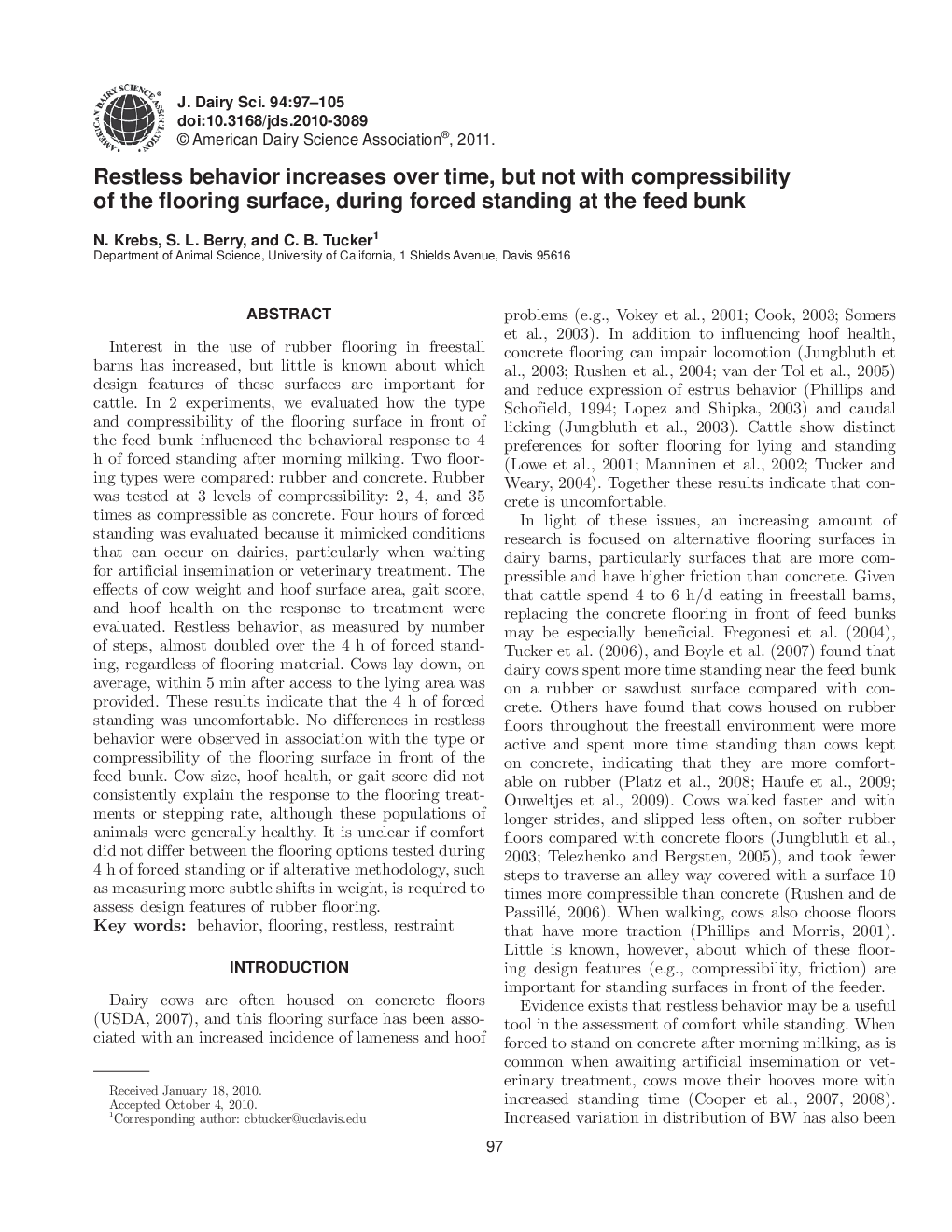| Article ID | Journal | Published Year | Pages | File Type |
|---|---|---|---|---|
| 10980678 | Journal of Dairy Science | 2011 | 9 Pages |
Abstract
Interest in the use of rubber flooring in freestall barns has increased, but little is known about which design features of these surfaces are important for cattle. In 2 experiments, we evaluated how the type and compressibility of the flooring surface in front of the feed bunk influenced the behavioral response to 4Â h of forced standing after morning milking. Two flooring types were compared: rubber and concrete. Rubber was tested at 3 levels of compressibility: 2, 4, and 35 times as compressible as concrete. Four hours of forced standing was evaluated because it mimicked conditions that can occur on dairies, particularly when waiting for artificial insemination or veterinary treatment. The effects of cow weight and hoof surface area, gait score, and hoof health on the response to treatment were evaluated. Restless behavior, as measured by number of steps, almost doubled over the 4Â h of forced standing, regardless of flooring material. Cows lay down, on average, within 5Â min after access to the lying area was provided. These results indicate that the 4Â h of forced standing was uncomfortable. No differences in restless behavior were observed in association with the type or compressibility of the flooring surface in front of the feed bunk. Cow size, hoof health, or gait score did not consistently explain the response to the flooring treatments or stepping rate, although these populations of animals were generally healthy. It is unclear if comfort did not differ between the flooring options tested during 4Â h of forced standing or if alterative methodology, such as measuring more subtle shifts in weight, is required to assess design features of rubber flooring.
Related Topics
Life Sciences
Agricultural and Biological Sciences
Animal Science and Zoology
Authors
N. Krebs, S.L. Berry, C.B. Tucker,
